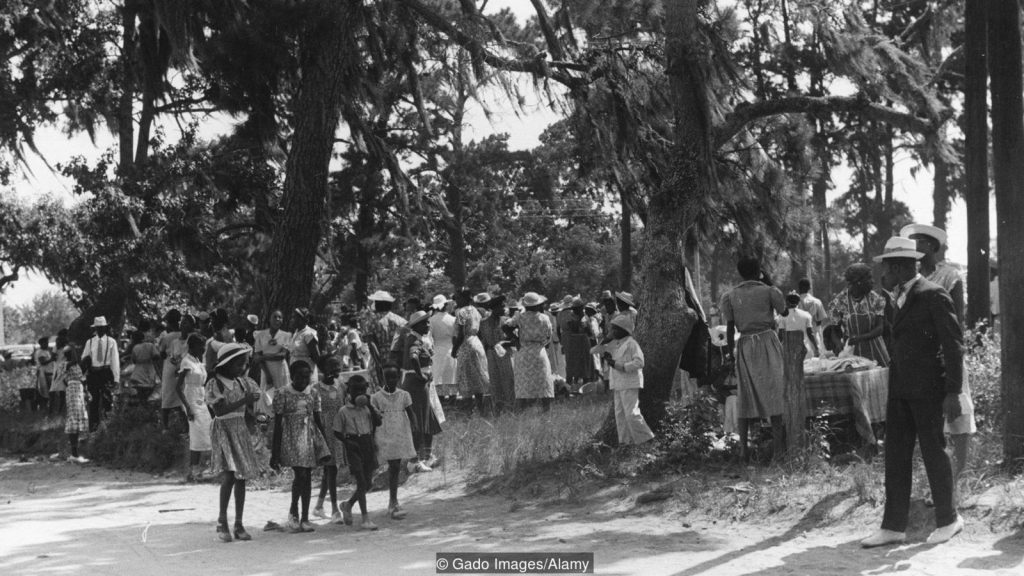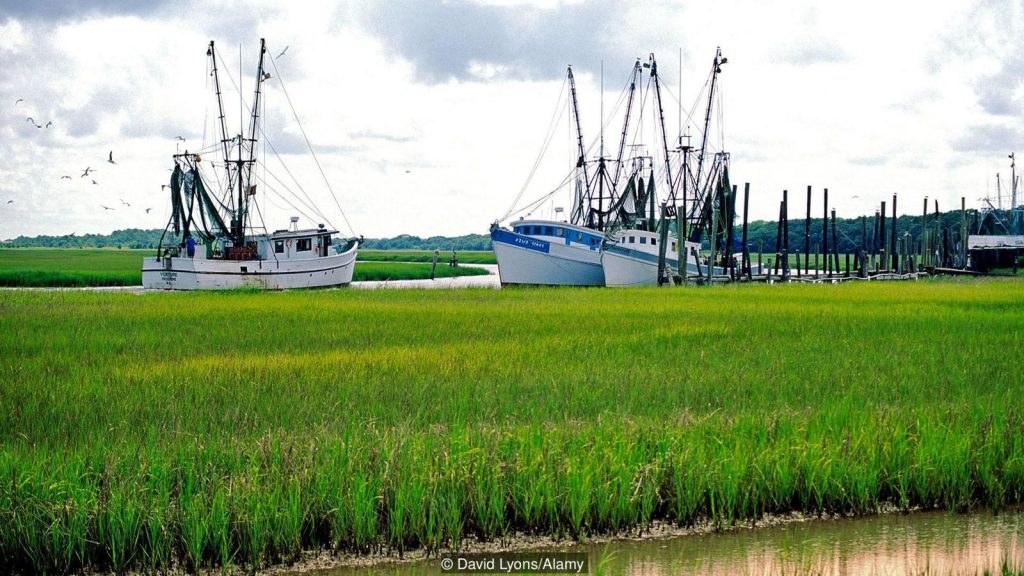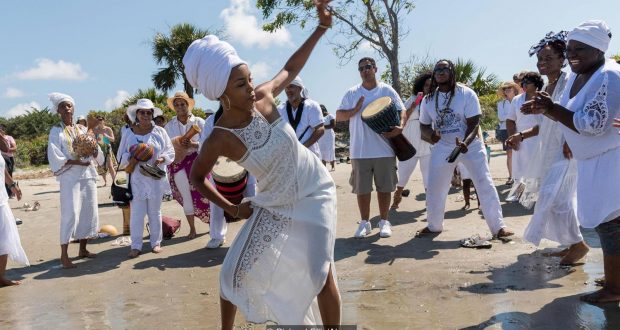By Erica Chayes Wida
Spanish moss draped over St Helena Island, South Carolina, as Elting Buster Smalls and his children hummed down the earthen path in their 1960s station wagon. It was the summer of 1974, and the harvest from the Smalls’ 20-acre farm – passed down since the late-1800s through their family of newly freed enslaved and runaway West Africans – was bountiful. Smalls and his children packed baskets of fresh honeydew, peanuts and sugar cane, and fish they’d caught in the river, to drop on the porches of local elders who were no longer able to work the land.
But today, nearly 50 years after Elting first taught his young daughter Victoria Smalls about the traditions integral to their identity, many Gullah Geechee can no longer work the land, as the land – and thereby the Gullah Geechee way of life – is being rattled by climate change.
Victoria, the 13th of Elting and his wife Laura’s 14 children, grew up Gullah – a word she didn’t actually learn until after college in the early 1990s. (Colloquially, Gullah distinguishes whether a Gullah Geechee individual lives north of the Savannah River, while those south of it are referred to as Geechee.) For Victoria, Gullah Geechee wasn’t the mystic, isolated culture of inherited Africanisms and Southern landscapes that had become of interest to 21st-Century academics, tourists and hungry land developers.
“It was just our way of life,” said Victoria, who later moved from St Helena to Charleston, South Carolina, to work on the International African American Museum, which, when it opens in 2020, will illuminate South Carolina’s global historical significance and show the role enslaved Africans and free blacks had in shaping the US.
The Gullah Geechee are descendants of Central and West Africans who are believed to have been trafficked into what is known as the Low Country for their expertise in coastal rice farming and irrigation systems. After the American Civil War ended in 1865, Union General William T Sherman established Special Field Order 15, which designated 400,000 acres of land along the coastline of the Southern US, from South Carolina to Florida, to newly freed black families in parcels of roughly 40 acres each. The isolated geography, which is spread out over 12,000 sq miles known as the Gullah Geechee Corridor, created insulated coastal and island communities, most of which were at least 90% black, with well-preserved cultural traditions.
Gullah Geechee religion incorporates Christianity with African belief systems, much of which was reflected in the lessons Victoria was taught as a child. Respect for nature, as well as elders and community, was sacred. African crafts were passed down for necessity, like cast nets and flat-bottomed boats known as ‘bateau boats’, which Victoria said are based off the West African dugout and redesigned to easily navigate shallow shores and waterways. The craft of sewing pieces of cloth into large, colorful patterns was combined with European quilting to become a creole art form that also allowed Gullah Geechee women to sit and socialize.

The Gullah Geechee are descendants of freed African slaves who inhabited coastal lands in the Southern US (Credit: Gado Images/Alamy)
“We didn’t have a bridge on [St Helena] until 1939. The island was like an incubator for the culture, the language. You don’t hear it now, but when I was growing up I had a very thick accent,” Victoria said.
The Gullah Geechee Cultural Heritage Corridor, which strives to preserve the Gullah Geechee sites and stories, describes the Gullah Geechee language as a creole dialect that sprung from the linguistic influences of “European slave traders, slave owners and diverse African ethnic groups”.
“Beaufort was only 7 miles away, and when I was four, five, up to 10 years old, people would laugh at me in Beaufort, even the blacks who were still Gullah Geechee people,” Victoria said. “The nurturing you received on St Helena Island was so wonderful that the language and the way of life and working the land, farming, living off the water and living in tight-knit communities – it was so different than that just 7 miles inland on the mainland.”

The Gullah Geechee Corridor’s isolated geography created insulated coastal and island communities (Credit: David Lyons/Alamy)
Today, the pejorative perception of the Gullah Geechee being uneducated or backcountry has shifted to one in which the identity is celebrated, both by academics and those who grew up in the culture. Yet the Gullah Geechee ways are slipping away.
According to Dr Albert George II, director of conservation at the South Carolina Aquarium who was raised Gullah Geechee, individuals residing in the more isolated communities such as St Helena still subsist on their own agriculture, sourcing food from their farms and gardens and fish from the waterways rather than going to the grocery store. But due to environmental changes, such as rising sea levels and salt water erosion, connecting to the earth through food is becoming a complicated feat.
To continue reading, please click here
 Westside Story Newspaper – Online The News of The Empire – Sharing the Quest for Excellence
Westside Story Newspaper – Online The News of The Empire – Sharing the Quest for Excellence




